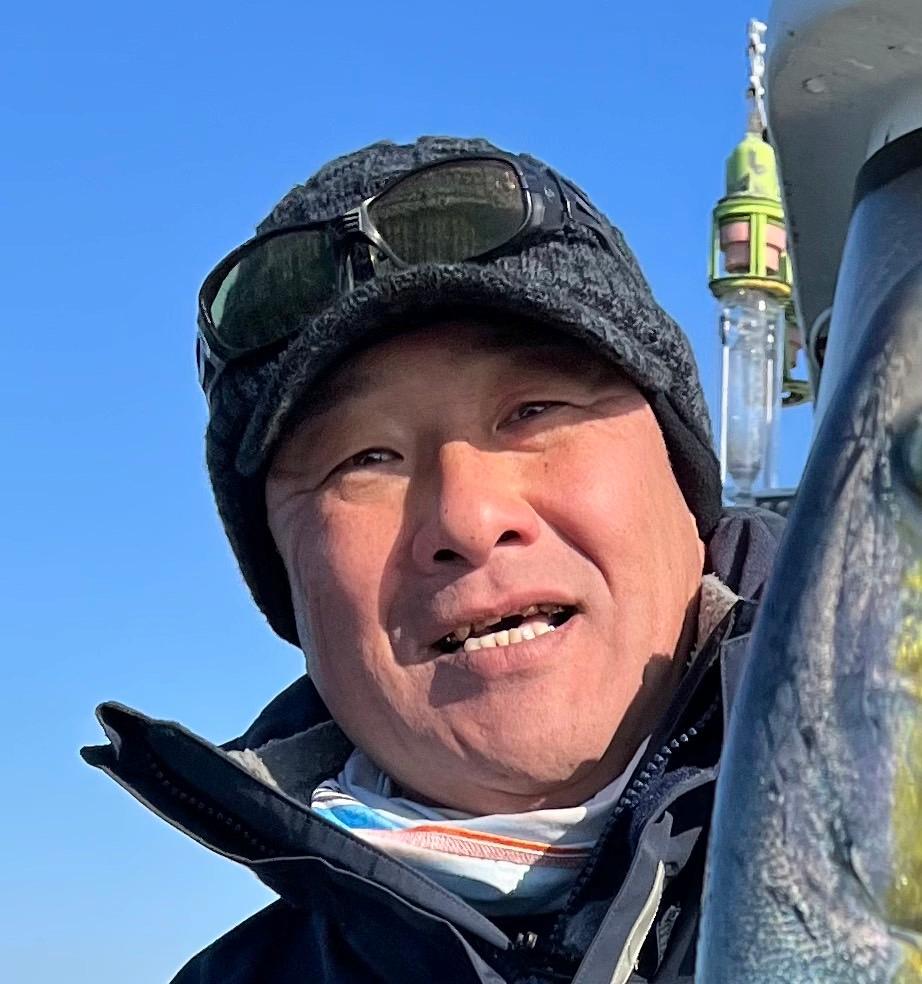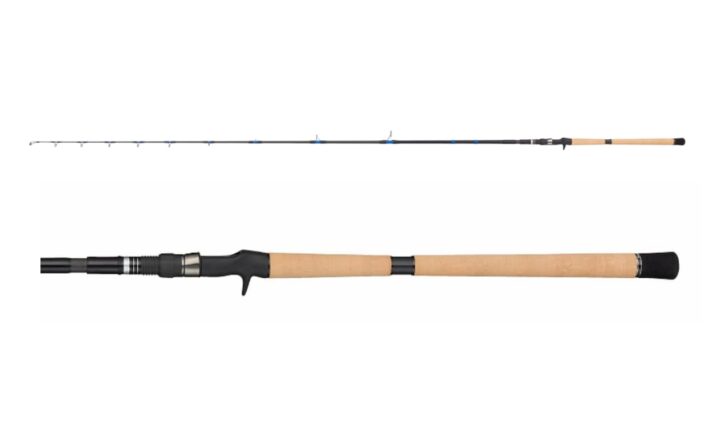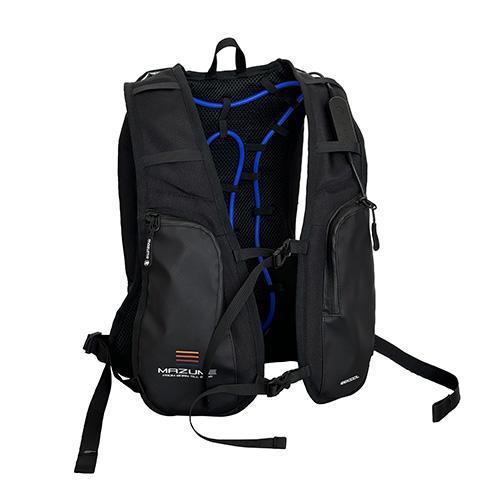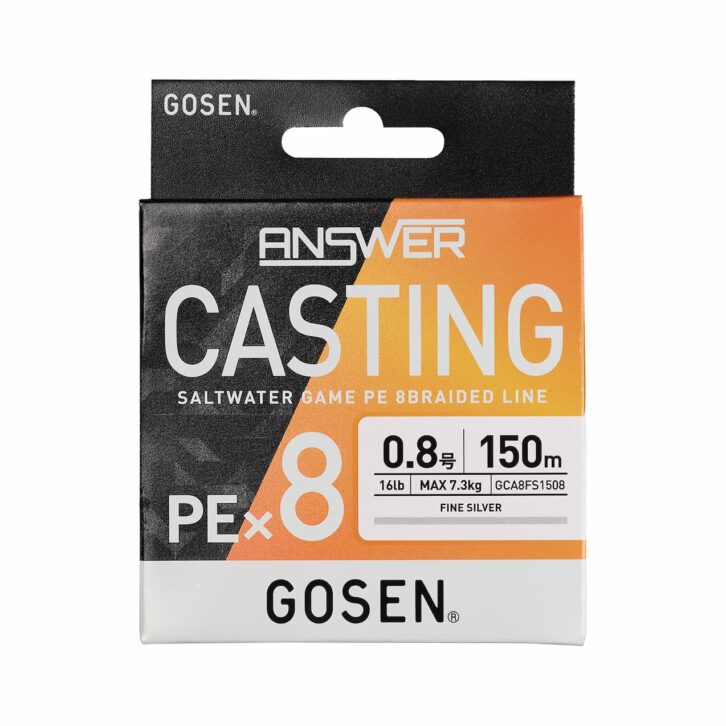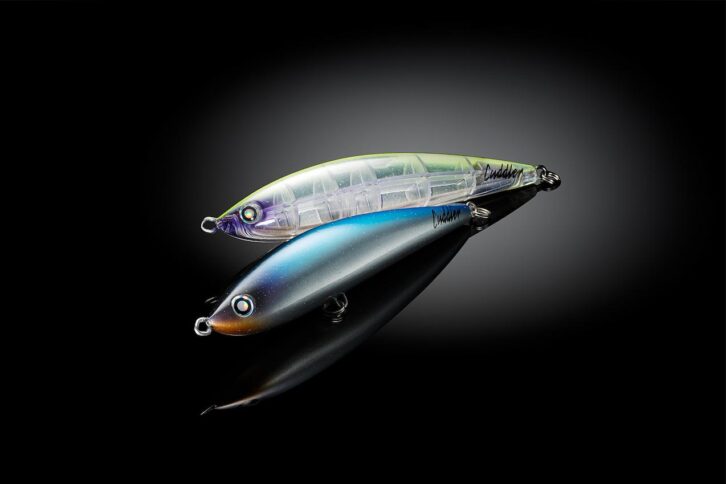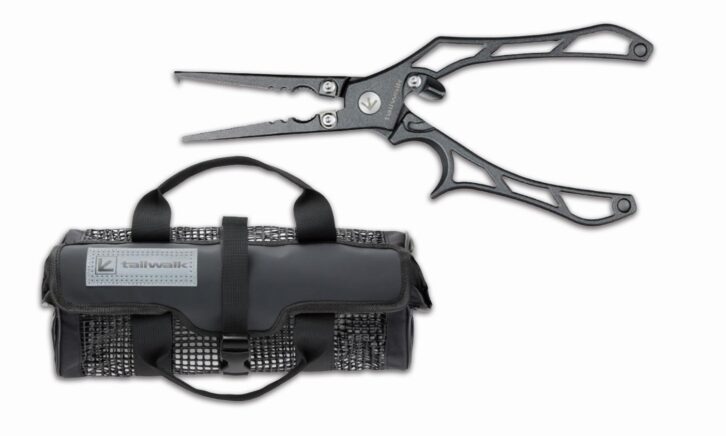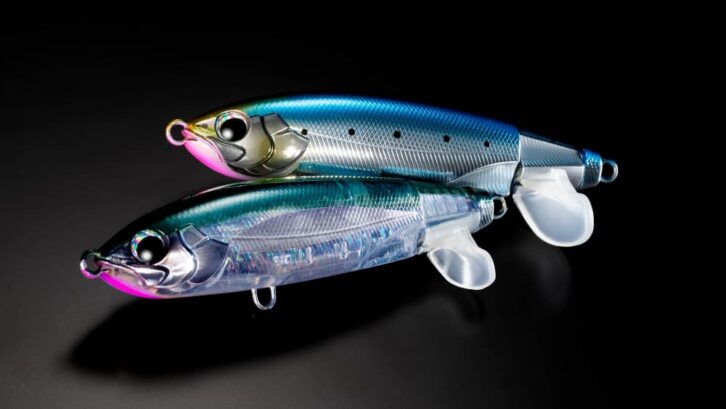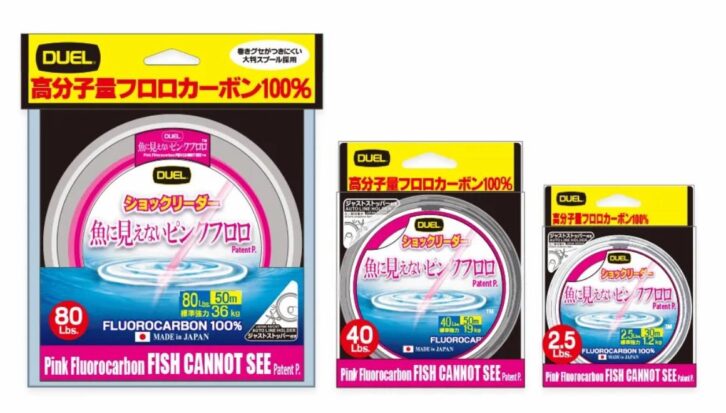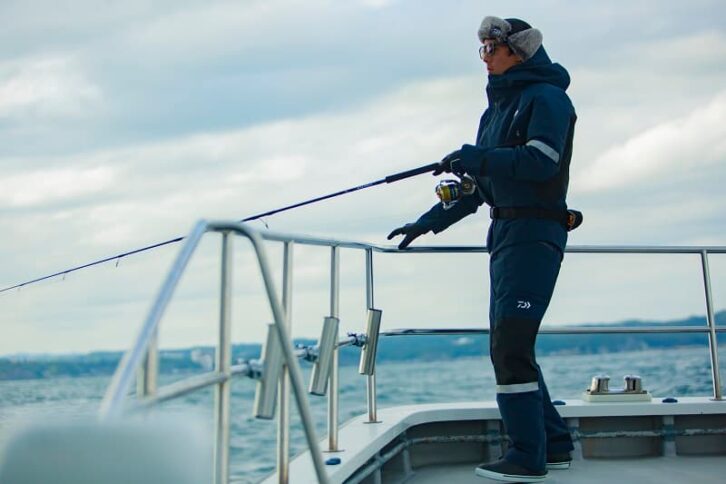Kei Hiramatsu's Offshore World vol.17
Offshore fishing. Fishing for “Goldic” off the southern coast of the Izu Islands in autumn. Aiming for Kampachi, Hiramasa, and Yellowfin tuna.
Autumn is the best season for offshore fishing. This autumn, the weather didn't quite turn into autumn at the beginning of November, but the sea is slowly turning into autumn. Therefore, I invited customers of my store Goldic to join me for an offshore fishing trip with autumn in mind. We visited the southern coast of the Izu Peninsula. The field was full of attractions, and both casting and jigging for bluefish made for a lively fishing trip. Here is a report on the event.
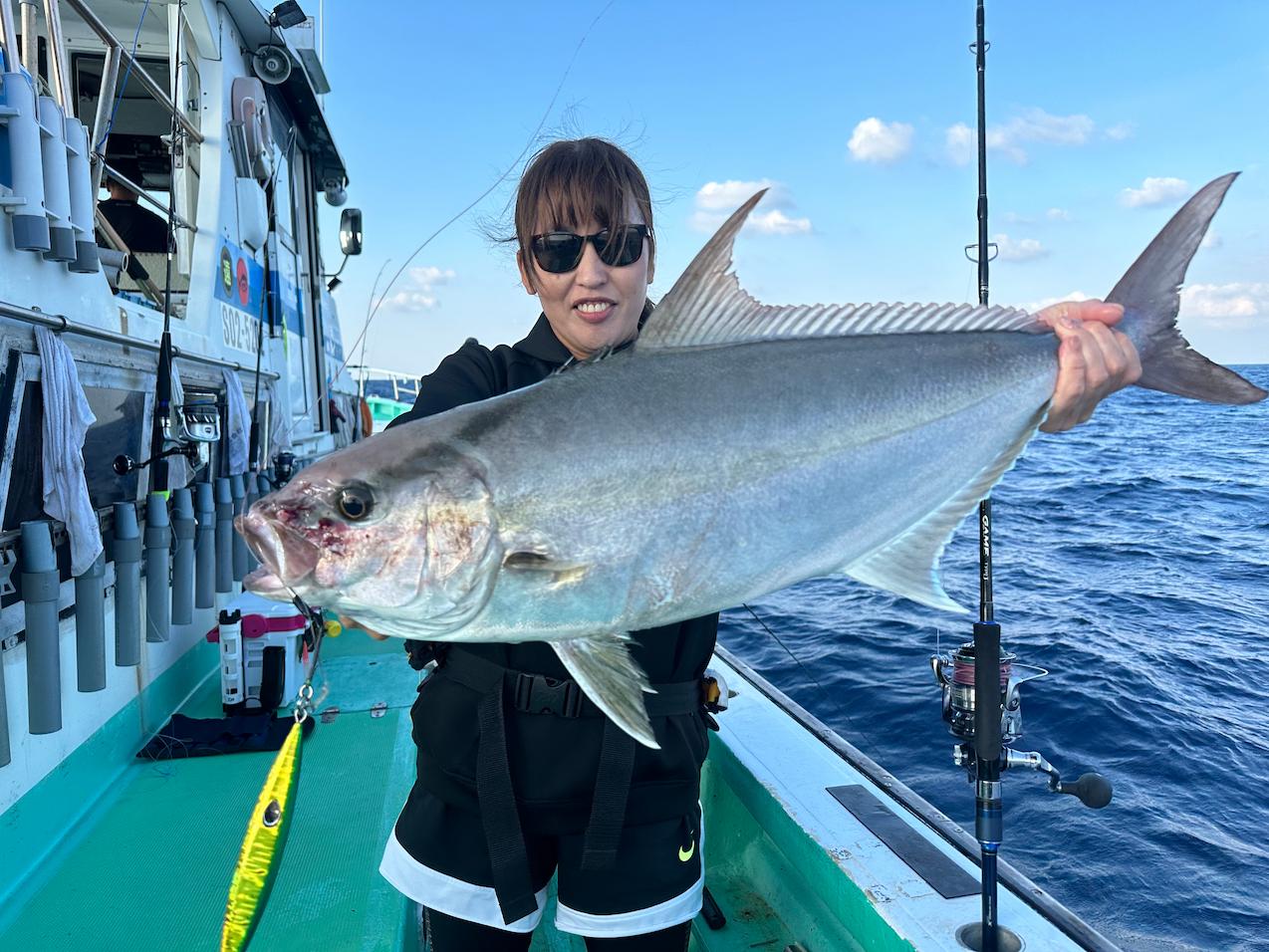
INDEX
Set sail for Izu Minami Offshore.
PENN’s new product rental.
On the day of the fishing trip, at 3:00 a.m., the participants gathered at Ajiro Port in Higashi Izu. The participants gathered at Ajiro Port in Higashi Izu. The stars were still visible and the moonlight was beautiful. The eight people on board prepared their tackle early in the morning. Captain Takio Morino of the Moriryu Maru starts the boat engine and the anglers take their fishing positions. This time, we invited Goldic’s guests to join us for an actual fishing trip for bluefish off the southern coast of the Izu Peninsula. The event will also be combined with a PENN reel product test fishing event, and participants will be informed of the series of events.
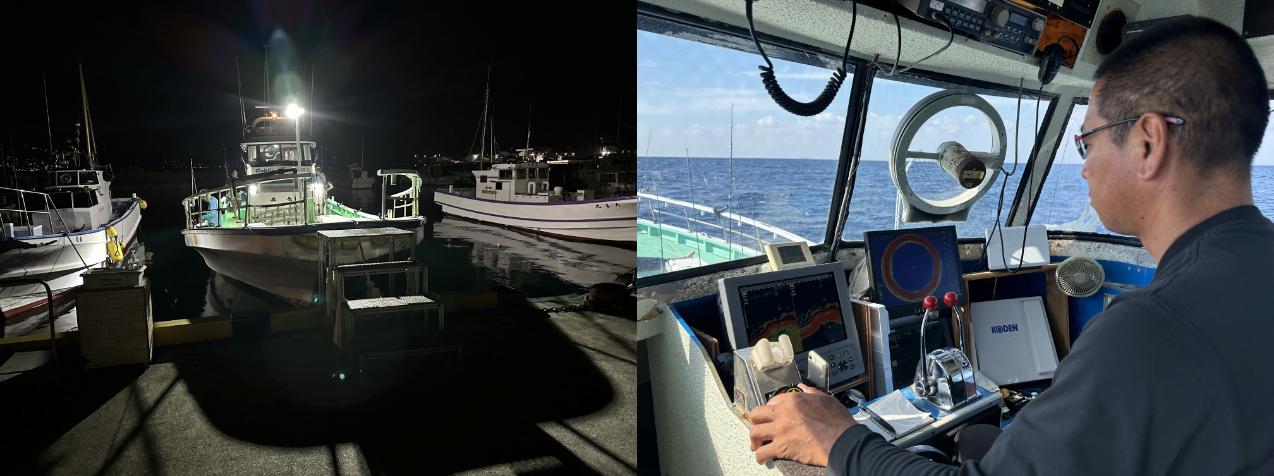
The boat is the Moriryu Maru of Higashi Izu Ajiro Port, which has been a favorite for fishing trips to the southern offshore of the Izu Islands and Mikurashima. It is an easily accessible port from the city center, yet it is a reliable boat that takes us to areas where large fish are lurking. The departure time varies depending on the fishing area, and this time we gathered at 3 am. The fishing time varies depending on the area, and this time the boat will meet at 3:00 am.
Pure Fishing Japan, the exclusive distributor of PENN reels in Japan, provided the following products for this trip.
The spinning reels are Authority 8500, 6500HS, Slammer 4DX 7500 and 8500; the bait reel is Fathom II LD Dive 25 narrow model (2024 release model). These new reels were available for rent, and the participants were able to get a feel for the new products by actually using them. The participants seemed to be looking forward to it. After handing over the requested reels to each angler, they left the harbor when they were ready to go. It was a two-and-a-half-hour drive to the point off the southern coast. Early in the morning, we arrived at the point. Here, we choose a jig size and set it according to the sea conditions announced by the captain. If the birds are all together, surface game is a given. We each spend the trip to the point in the cabin after perfecting our tackle preparation.

For this fishing trip, PENN will provide the products of PENN, of which Hiramatsu himself is a tester. Participants will be able to actually use the tools they are interested in from among those provided for actual fishing. For those who are considering purchasing, it is a great opportunity to use the products before purchasing.
The sound of the engine changes at 6:30 a.m. The luxury of being able to move around while sleeping in a one-mat space is attractive to anglers. After driving in the middle of the night and arriving at the port, I can concentrate on fishing by resting my tired body well. I left the cabin while brushing my teeth, feeling the luxury of being transported to the fishing grounds in a comfortable environment.
How to target bluefish-centered jigging.
There was no more wind than forecast. Up until the day before, the wind was forecast to blow strongly, and everyone had read that casting would be difficult. When we arrived at the point where we could see Toshijima, Niijima, and Shikinejima in the distance, there was almost no wind. With the conditions looking “castable,” anglers prepared to start fishing in their own styles. I wanted to target bluefish with a metal jig. I wanted to try a few things, so I started with jigging.
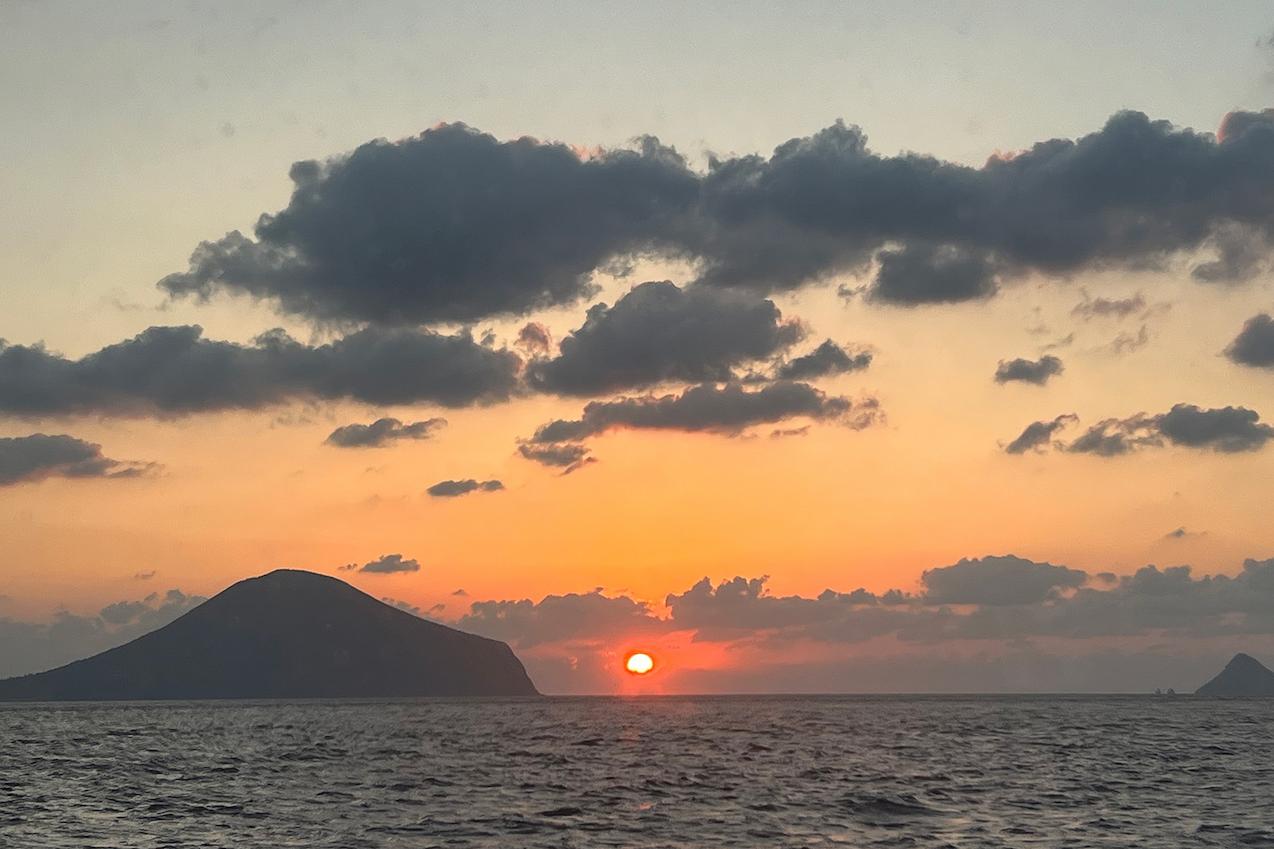
There was less wind and waves than expected, and the conditions were enjoyable for both casting and jigging.
“The water was 105 meters deep, with a depth of 20 meters from the bottom.
Bait (small fish used as bait) is reacting at a depth of 105 meters, down to 20 meters. Reaction also at 40 to 60 meters from the top. Here you go. Captain Takio Morino announced the start of the fishing. I started with a jig in “Aurora/Yellow Chart Color,” which I did not know why it was so effective, but had good results. The jig is KEI-JIG 235g.
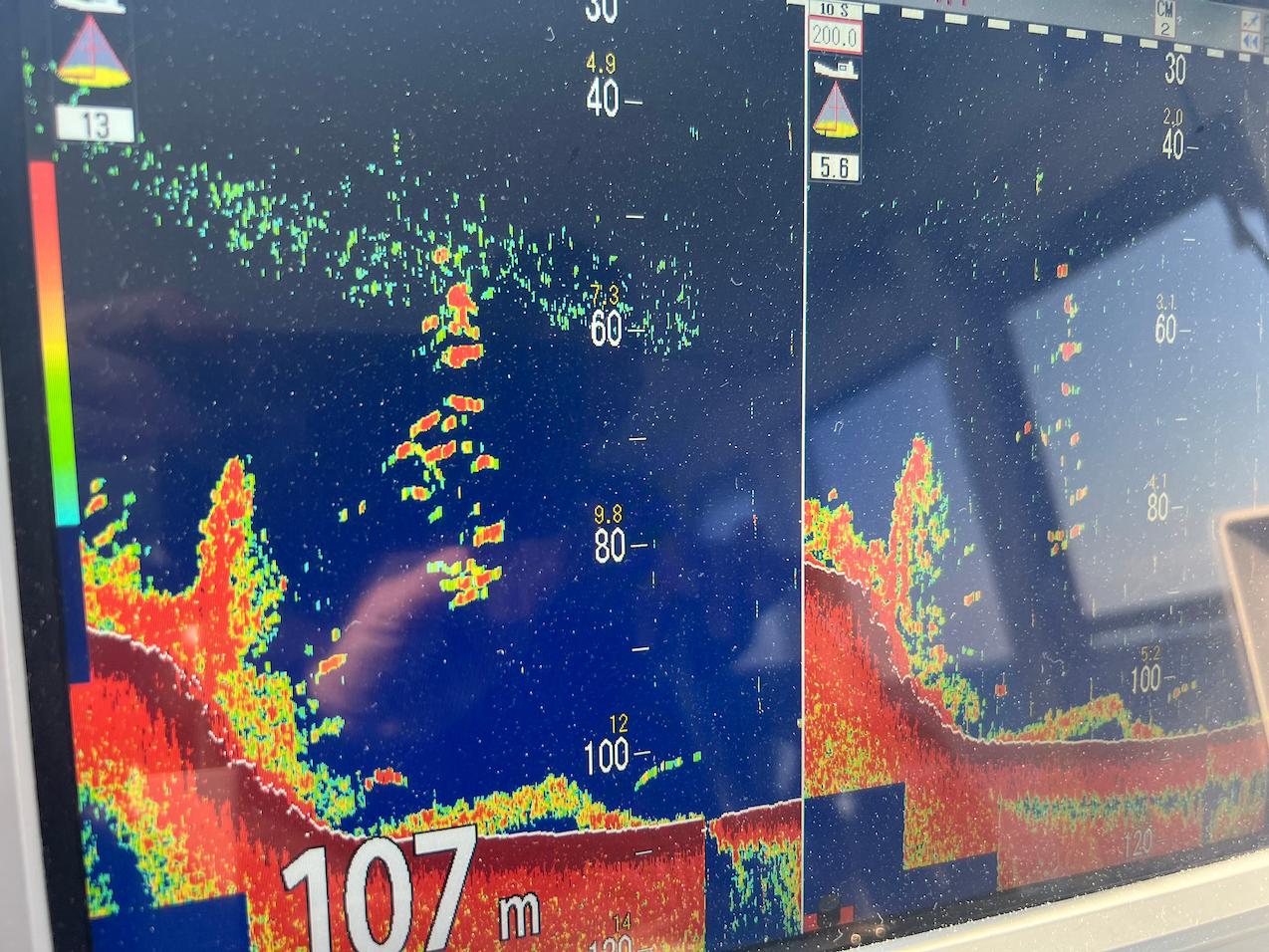
On this day, I mainly attacked an area of about 100 meters. As you can see in the picture, the situation was promising with bait on the bottom and fish-eaters reacting above them. However, this situation will not last forever. It is important to concentrate on the search.
At depths of around 100 meters, it is also important to check for double tides and other conditions. We need to know what kind of pressure the metal jigs are under in the water, the current and pull of the tide, and the movement of the jigs. I fantasized about the baits on the bottom that the captain had told me about over the announcements, and how to lure out the bluefish that I guessed were among them. I could not build up a plan of attack without knowing what was going on in the water where the jig was falling, rather than just dropping the metal jig and shimmying it. To put it into words, I wanted to lure the fish by giving the metal jig a flashy, fast-pitched action around the bait near the bottom so that it would appeal to the fish. First, we use “line action (line luring),” which is mainly a one-pitch action, and then we use hovering action with the Gummy fat 235g to grasp the underwater situation.
I could see that the bottom tide was flowing well because I was able to get a horizontal or flat posture in the water for a long time when hovering the Gummy fat. I knew this right away, so for my first target of the morning, I attacked first with an aggressive approach, moving the pitch of the jig faster. I decided that the environment was not one of reluctance to bite, but rather that biting bluefish were coming to the baits. This proved to be the case about 30 minutes after the 6:30 a.m. start time. The jig landed on the bottom, and I searched the bottom area, shaking the tail butt of the KEI-JIG 235 g. I shook the tail butt 30 times from the bottom, and in between, I got a hit. Although not a large fish, I first hooked a Hirenaga kanpachi. This raised the activity of the anglers on board.

Hiramatsu’s Mast Pattern
The KEI-JIG is a metal jig that incorporates “line action (line luring),” and the KEI-JIG Sharp model was probed with the same kind of movement. At this time, the bottom tide started to move more than expected, and the rods of the participants started to bend one after another. I switched back to KEI-JIG from Sharp and went to support anglers. Then, a female angler, Ms. Mari Nakagawa, bent her rod very much. She had been fascinated by offshore jigging since Goldic’s last fishing trip off the southern coast of the Izu Islands, and she seemed to have enjoyed jigging in Izu by herself this summer, so she was a good fighter. The first fish that came up while we were watching was a 4.7-kilogram Hirenaga kanpachi. He caught a good-sized fish while watching over the male angler, who was using a 235g KEI-JIG and chewing it very carefully. He said he was able to read the bite pattern of the fish.
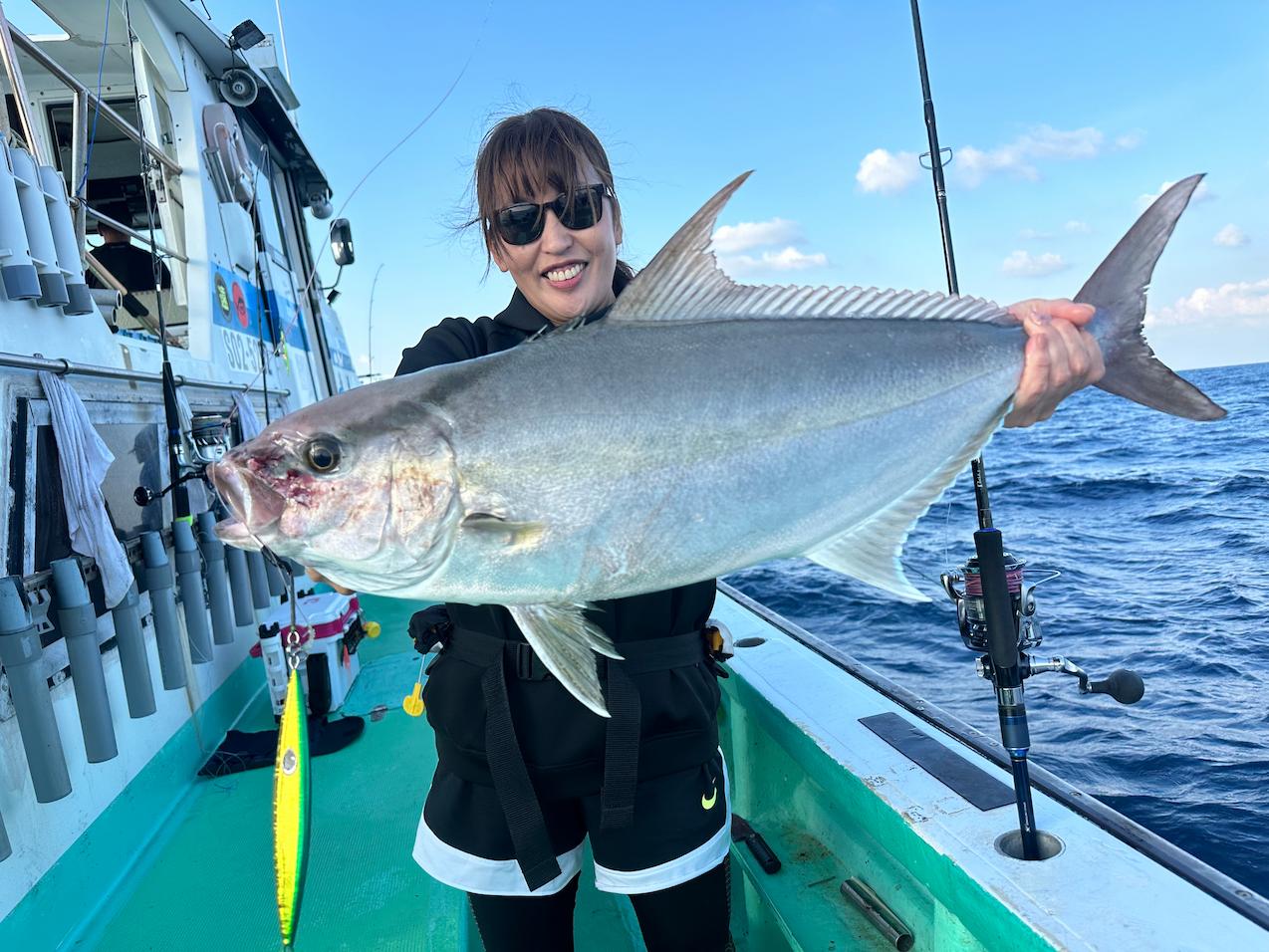
Female angler Mari Nakagawa’s KEI-JIG 235g caught a hit. She was able to get the hit by chewing the lure finely.
After that, almost everyone on the starboard side of the boat got a hit of KAMPACHI. I realized as I was taking pictures that this is the charm of Izu. After the rush was over, the bite stopped at the end of the tide. The boats stopped moving, and after 10:30, we went into a relaxed mode. This is the game of the sea. The key is to be able to control the jig in the water at the right time when you need to get them to bite. This is the key.
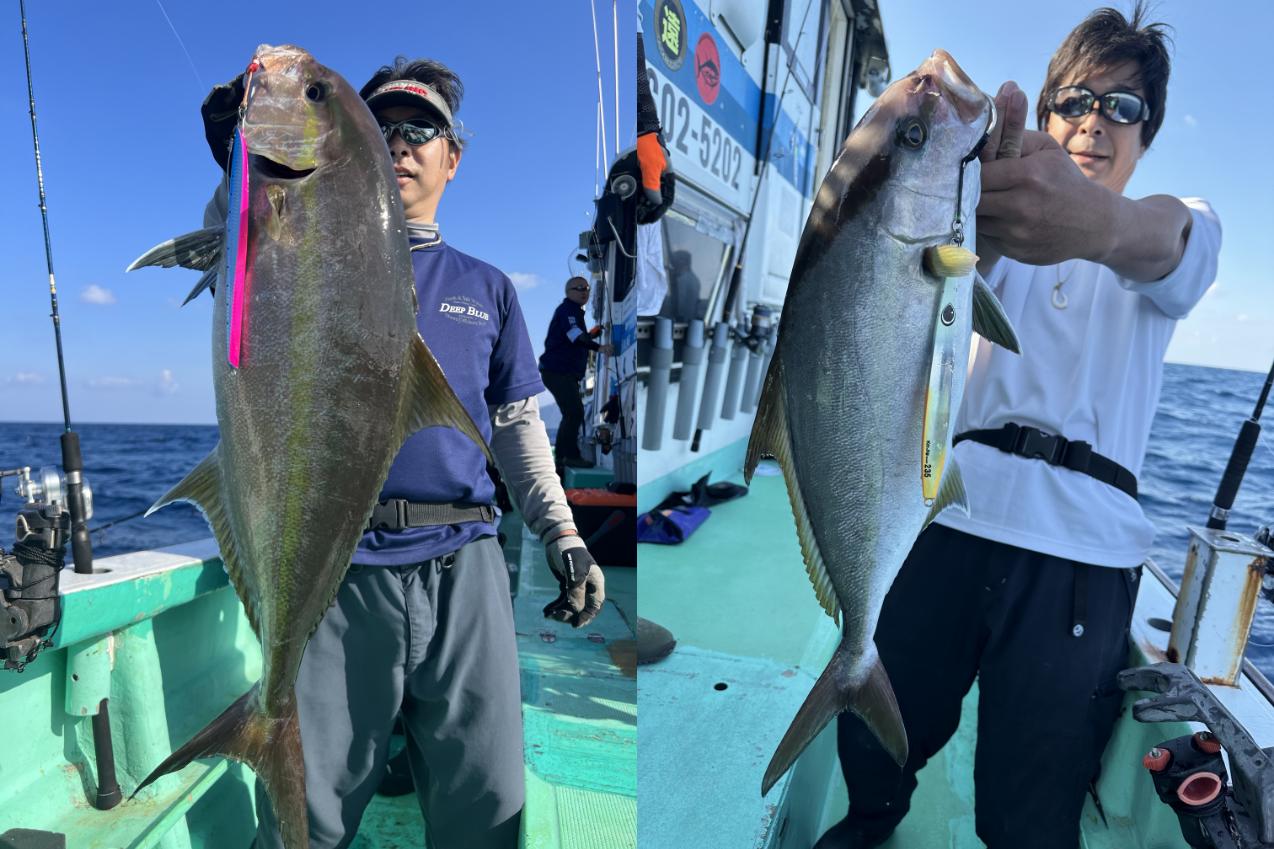
The time is right, and the boat is getting a lot of hits of kampachi. The key to success is to keep the jig moving and lure the fish at the right time, when the fish are responding to the jig.
After that, there were no significant catches until about 12:00 pm. There was not a single waterfowl flying in the sea, but I could sense from my metal jig when there was a slight movement on the surface of the water. The upper tide started to move. It was the last drift of the day, and almost everyone was in a giving up mode. I wanted to catch a good size bluefish until the last current.
It was 12:50. The announcement was made, “This is the last current. Last 5 minutes. I looked at my watch and thought. I let the jig hit the bottom. The 235g KEI-JIG starts swimming lighter than that. The rod was squeezed with the drag sound of the Authority 6500HS. The action was a loud probing action near the bottom, so I felt without a doubt that it was a good size.
At 12:58 pm. The last of the last hit. The captain told me that the other anglers were finished, and I would be finished when I raised the fish I was hanging. The fish didn’t shake its head much. It was running hard, but it was not sustainable. The rod I was using was a prototype light model, so I didn’t want to force the fish back and forth. What is it…? I knew the approximate species of fish by its movement, but I didn’t know the species it was fighting with, which I had hooked near the bottom. I was extra cautious because the place where the fish hit and the way I was aiming at it were the species I was looking for. It was in the middle of the water and was running into the bottom again. I don’t do anything reckless, but when it’s time to pull in, I pull in with guns blazing and close the distance between me and the fish.

A good-sized fish hit on the bottom. Was it a kampachi, sunfish, or something else? Or is it another fish? Usually, you can tell what kind of fish it is the moment it is hooked, but this fish showed a movement that was impossible to determine.
“Could it be a shark?” A nasty thought popped into my head. But if it were a shark, it would shake its head more. But sharks don’t shake their heads that much… I kept thinking about this and kept trying to float the fish. I saw a brownish body. “Is it a shark? No, it was not a shark. It was a yellowfin. I hooked it on the bottom and it was a yellowfin. I thought it was a good size sunfish or a 20 kg class kanpachi. I believed so. The reason why the fish didn’t attack me was that it wasn’t hooked in the mouth, it had swallowed the fish and reached the gills, so it couldn’t move as it should. However, everything was different. It was a beautiful yellowfin that was firmly hooked on the hook. It bit near the bottom, so I made the wrong decision. Fight time, 19 minutes. After returning to the harbor, we measured the weight of the fish at 30.24 kg.

The fish that came up was a yellowfin tuna. Normally, these fish do not feed on the bottom, but in the middle or surface layer. Was it chasing the jig on the fall?
Goldic’s autumn offshore fishing trip and PENN reel test fishing event was a success. We were one step away from getting all the kampachi to hit, but there were a few anglers who made a few on their own. I think it was another day where the typical offshore game was evident. When the tide is moving, you can still catch fish, and if you can ride the wave at that time, you can make up the numbers. When the tide stops, the activity drops, and you need to have the ability to read the tide changes. The area off the southern coast of the Izu Islands is rich in fish, but it is a difficult area to fish, which makes it even more interesting. I realized that the field is a place where you need to think, constantly check for changes in your surroundings, and stay focused so that you don’t miss the timing of the changes. My fishing trip to the Izu Minami Offshore, which I love so much, ended successfully, and I will continue to go to this field.

Members of the fishing party. The event ended with many people catching fish in a congenial atmosphere. Those interested should contact Goldic at the contact information below. The Moriryu Maru is already planning next year’s fishing trip.
Izu Ajiro Port Moriryu Maru Data
Captain: Captain Takio Morino 090-1620-1988
Moriryu Maru HP https://www.moriryumaru.com
Jigging Tackle
ROD: PENN Torque PHK-63ML (proto-dip), Torque PHK-63M
REEL: PENN Authority 6500HS
LNE & LEADER: Sunline X8 Full Contact #4 & Tsunagito #14, #16
LURE: K-FLAT Gummy 200g, 220g, 250g, Gummy-fat 180g, 200g,
KEI Jig 200g, 235g, KEI Jig sharp 200g, 235g, 260g
HOOK & PARTS: Owner HyperWire #7, Solid Ring 6.5mm
JS-39 Blue Chaser 11/0, 9/0
Polarized glasses: zeal optics, vero model
Kei Hiramatsu’s YouTube channel
Tackle inquiries
Goldic (Closed on Tuesdays)
HP address : https://www.goldic.net/
Kei Hiramatsu’s official blog “Iibusa Diary
https://kei-hiramatsu.com
Kei Hiramatsu Facebook
https://www.facebook.com/hiramatsu.kei.1
X (Twitter) account
@keitanhiramatsu


